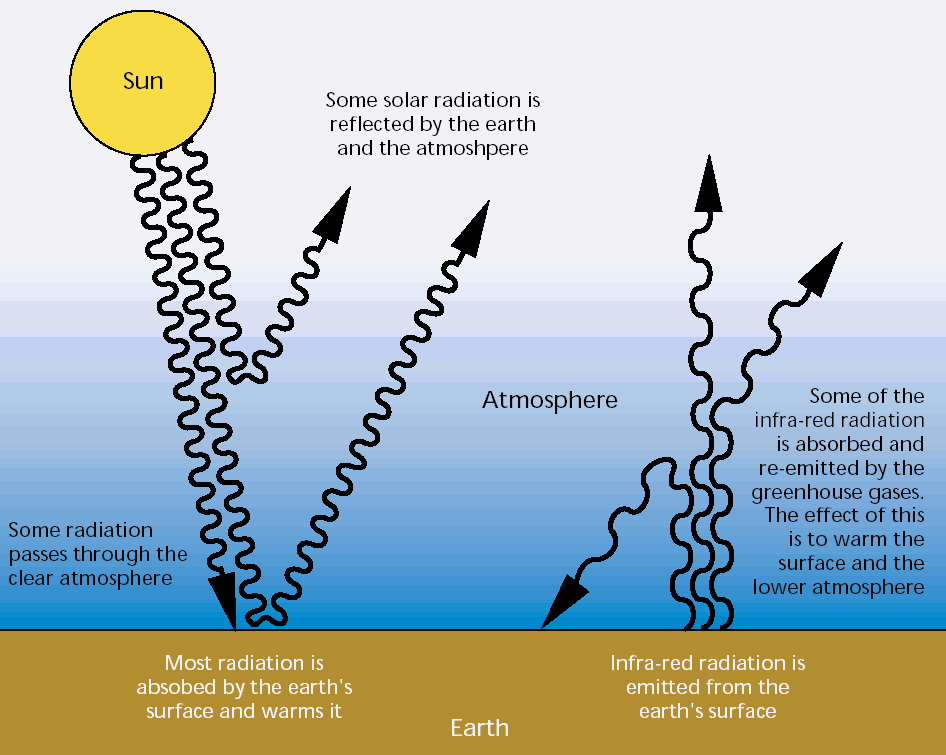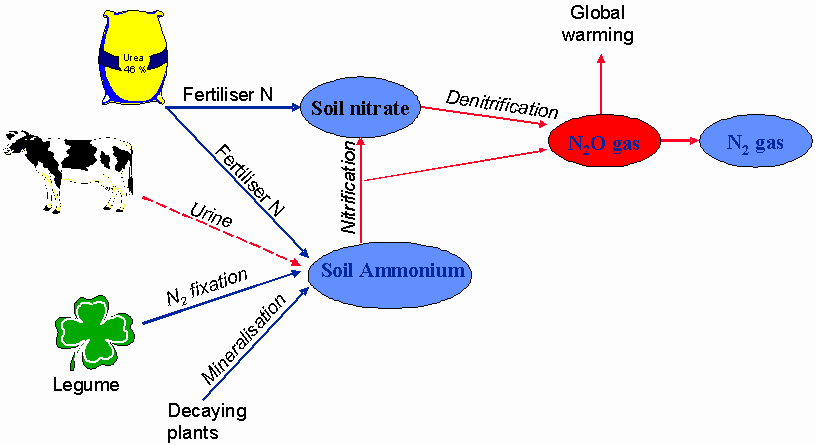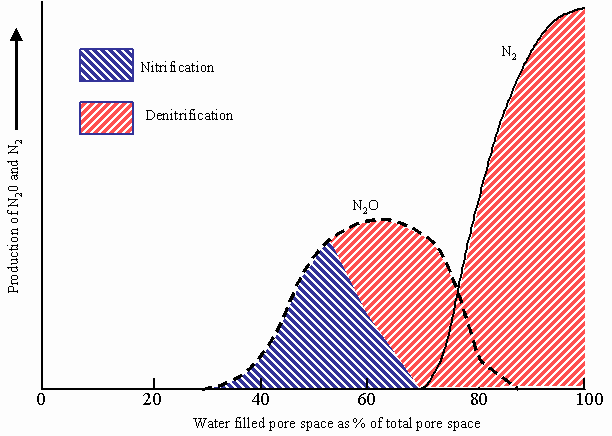Best Management Practices for Reducing Greenhouse Gas Emissions from Dairy Farms
Richard Eckard, ILFR, The University of Melbourne, and Roger Hegarty, New South Wales Agriculture
Introduction:
By now most farmers would be aware of media reports on "global warming", "greenhouse gas emissions", and closer to home, potential "burp taxes" for cows belching methane. While it is still too early to predict ‘who will pay and how’, it is now clear that Greenhouse Gas emissions and Carbon trading will affect the way all sectors of society conduct business in the not too distant future and we need to be informed and prepared.
Key Messages:
Greenhouse gas emissions are increased when:
a) Cows are fed poor quality diets:– feed cows high quality pasture, while also feeding a high energy supplement.
b) Poor nitrogen fertiliser management:– avoid high rates on nitrogen fertiliser and high stocking rates on water logged soils, especially at high soil temperatures.
By applying current best management practices for grazing management, balanced dairy cow nutrition and nitrogen fertiliser management we can reduce both methane and nitrous oxide emissions and improve the efficiency of dairy production.
A potential Win-Win opportunity.
Why are these gasses important?
Greenhouse gasses act to absorb the sun’s heat and thus warm the atmosphere (Figure 1). It stands to reason that, if we increase the concentration of these heat-absorbing gasses, the atmosphere warms up, resulting in a global warming – thus the name Greenhouse Gas.
The two largest sources of greenhouse gas from dairy farms are:
Methane – methane is a gas generated by a group of microbes in the rumen called methanogens and is mainly belched out by the cow. In general terms, the lower the quality of the diet the more methane is produced.
Nitrous oxide from soils – commonly known as happy gas, this gas is released when soil microbes convert soil nitrogen into nitrous oxide under warm and waterlogged conditions. The main source on dairy farms would be from urine, but legumes and nitrogen fertiliser also contribute significantly.
Methane absorbs the sun’s heat 21 times more than carbon dioxide and thus has a global warming potential of 21. Nitrous oxide is far more powerful again and has a global warming potential of 310.

Figure 1. The greenhouse effect (IPCC 1990)
Why should Farmers bother?
a) Environmental trade barriers
In a future world market greenhouse emissions will attract a carbon cost. Lack of action by the Australian Dairy Industry may, therefore, result in an environmental trade barrier against Australian produce.
More than 30 % of Australia's total greenhouse emissions are due to methane and nitrous oxide originating largely from agriculture. The Australian Dairy Industry contributes around 12% of all greenhouse gas emissions from agriculture in Australia. Although this is only 2 to 3 % of national greenhouse gas emissions, the dairy industry is the largest source of both methane (40%) and nitrous oxide (47%) in south eastern Australia.
While changes in greenhouse gas emissions are reasonably static in most agricultural industries, emissions from the dairy industry have increased by 22% since 1990, an increase that will not escape notice locally or by international markets. Increasingly global markets will be seeking evidence of "green" production systems and "Greenhouse Friendly" produce.
b) Managing the natural capital
To ensure that we leave a viable agricultural industry for the next generation we must ensure that farming is meeting the triple bottom line i.e. we are economically, socially and environmentally sustainable. If we do not act on global warming, rainfall will continue to decline to the point where farming is no longer viable in many areas of Australia.
c) Win-Win opportunities:
The losses of methane and nitrous oxide represent inefficiencies and losses of energy in our current dairy production systems. It therefore stands to reason that reducing these losses will improve the efficiency of dairy farming and potentially increase milk production. This should be seen as a potential Win-Win opportunity and not a threat to the dairy industry.
This article aims to provide some simple guidelines on what can be done to reduce losses of these two gasses and, thereby, improve the efficiency of dairy farming.
Reducing methane emission from dairy cows
Methane is a very high form of energy, thus any loss of methane from dairy cows represents a loss in potential production. As a general rule, methane emissions are reduced as digestibility and the protein / energy balance is improved.
1. Changing Herd Size
Running a small number of high-producing cows generates less methane than running a larger number of less productive cows, producing the same volume of milk.
A simple option to reduce methane emissions from the herd is to run fewer cows, but manage each of these to be more productive. By improving genetic and nutritional management, milk production can be maintained from a smaller herd. This is apparent in recent changes to the Queensland dairy industry as shown below. From 1988 to 1996, cow numbers fell 11% but milk production per head rose 38% and total methane release from the Queensland herd is estimated to have fallen 6 %.
Associated with producing more milk per head on pasture based systems is an increase in the emission/head, but this is more than compensated for by less cows. In the Queensland example, milk yield increased from 38% /cow/d but methane production /cow/d rose 6%. Reducing total methane production per enterprise for pasture based dairies is therefore dependent on decreasing herd size as milk yield/cow increases.
2. Type of Feed
Improving the digestibility of the diet, through a combination of improved pastures, concentrate feeding and decreasing the number of cows will further reduce methane production without reducing milk production.
Methane producing rumen microbes thrive on highly fibrous feeds (eg. mature pasture and hays). These low digestibility diets ferment to a near-neutral pH producing large amounts of hydrogen gas which the methane-producers require. In contrast, cereal grain concentrates ferment to produce little hydrogen gas and a highly acidic rumen, both of which are restrictive to methane producing rumen microbes. Thus providing cows with the best combination of pasture quality and concentrate feeding will effectively reduce methane emissions from the herd. Improving silage quality also??
2.1. Improving Pasture Digestibility
Milking cows are perpetually hungry! Consequently, the more digestible the pasture the more they will eat and the more milk they produce. However, with increasing intake of pasture there will also be a rise in the daily methane production per cow. The conclusion is to run more cows on less area but with higher feed quality, thereby producing the same amount of milk but less methane from the farm, as well as reducing milking time and replacement heifers required!
2.2. Level of concentrate
Cereal based supplements are rapidly fermented in the rumen, providing an environment that is hostile to the methane-producing microbes, thus progressively decreasing methane production per cow. This is partly because of the concentrate’s effect in the rumen and partly because the intake of pasture declines as concentrates substitute for pasture.
3. Feed Additives
There is substantial opportunity to reduce rumen methane from cows through feed additives in the future, but no ‘sure-fire’ products can be recommended until further research has proven their long-term efficacy.
One of the challenges to using feed additives to reduce ruminal methane production has been the need to have the active ingredient always present at an effective concentration. This is where dairy production systems have the advantage of feeding daily during milking, as opposed to the extensive grazing industries. A slow release form of a new anti-methanogen compound is currently being developed by CSIRO in Australia and may be available in the future. Other potential products and solutions are listed below.
3.1. Oils
Specific medium chain fatty acids, such as those found in coconut oil, effectively poison ruminal methane producers reducing methane production (Figure 6). While responses are not as strong in the animal as they are under laboratory conditions, there is hope that supplements of these fatty acids will provide a simple way of reducing methane emissions in the future. Coconut oil, for example, is effective because it is liquid in the rumen environment.
It should not be expected that protected or insoluble fats (eg. Megalac™) will reduce methane production since they are especially formulated to be rumen inert. While free polyunsaturated fatty acids such as linseed oil also suppress methane production, they also cause a general suppression of rumen fermentation and reduce energy absorption at levels above 5% in the diet.
3.2. Antibiotics
To maintain consumer confidence in milk as a pure and safe product, the non-therapeutic use of antibiotics in animal agriculture should be eliminated as a matter of principle. One antibiotic that is generally accepted in dairy production is Monensin™, provided as either a feed additive or a rumen capsule.
The methane suppressing effect of Monensin is typically not maintained for long periods. While its action has been shown to continue for over a month in sheep, cattle studies have shown Monensin often loses its methane suppressing activity with prolonged or repeated application. Recent evidence of sustained methane suppression by Monensin in cattle during a 72 d field study shows further study is needed on the long-term efficacy of monensin as an anti-methanogen.
Other antibiotics which have had application as feed additives such as Virginiamycin, have smaller effects on methane production and would not be used for this purpose alone.
3.3. Other Feed Additives
No other feed additives have been shown to be routinely effective in reducing methane emissions from cattle. While there has been some indication that yeast cultures may reduce methane production, no generalisation can be made as results differ between studies and between strains of yeast. Where effects are observed they appear to only last for 2-4 hours after the culture is fed.
The High-Tech Future
As well as optimising existing management practices, the next 10 years will probably see new biological tools to reduce methane production from dairy cows and these may include:
· A vaccine against methane producing organisms.
· Biological control agents against methane producing organisms and other organisms which associate with methane producers.
· Breeding cows that eat less and produce less methane without compromising milk yield.
· Introducing other naturally occurring organisms into the rumen, which will use rumen hydrogen gas, starving the methane producers.
· High malate or fumarate forages being developed by plant breeders
Reducing Nitrous Oxide emission from dairy pastures
Nitrous oxide is a very powerful greenhouse gas and, although losses are small in agronomic terms, these losses represent an inefficiency in the production system.

Figure 7. A diagram of the sources of soil nitrogen and the loss of nitrous oxide from dairy pasture.
1. Where does nitrous oxide come from?
The main source of nitrous oxide on dairy farms is cow urine, but nitrogen fertiliser and legumes contribute significantly
Nitrous oxide losses from dairy farming systems are primarily from the following sources (in order of magnitude):
Dung and urine are both high in nitrogen, with almost all the nitrogen in urine being in the urea form. However, in warm and waterlogged soils this urinary nitrogen can convert through to nitrous oxide within days.
Nitrogen fertiliser provides either ammonia or nitrate directly to the soil. Under cold and wet conditions an ammonia-based fertiliser (i.e. urea or DAP) does not readily convert to nitrate and should produce less nitrous oxide than nitrate-containing fertilisers.
Legumes like white clover fix nitrogen from the air and release this either directly into the soil from their decaying roots or indirectly through the dung and urine of animals.
Soil organic matter is continually being broken down by microbes, releasing nitrogen into the soil. Cultivation disturbs the soil organic matter increasing the rate at which soil microbes can release nitrogen into the soil.
2. How is nitrous oxide produced?
Nitrogen in soil can exist either in organic, nitrate or ammonium forms. Soil microbes continually convert soil nitrogen into various forms, depending on the soil conditions.
Most nitrous oxide is produced through a process called denitrification, which produces both nitrous oxide (N2O) and di-nitrogen (N2). Around 78% of the air we breathe is di-nitrogen so this small loss is not an environmental issue. However, nitrous oxide is a powerful greenhouse gas. Smaller amounts of nitrous oxide are also produced by a process called nitrification, when soil ammonium is converted to nitrate.
2.1. Soil nitrogen
The process of denitrification requires soil nitrogen to be available in the nitrate form. If soil nitrate is limited, the loss of nitrous oxide will be less. Nitrogen fertiliser rates above 50 to 60 kg nitrogen/ha per application will lead to sharp increases in nitrous oxide losses.
2.2. Anaerobic soils
The process of denitrification is greatest in anaerobic soils. In other words, the more water that replaces oxygen in the soil, the greater the denitrification rate. However, as the soil becomes totally saturated more di-nitrogen is lost than nitrous oxide (see Figure 8).
2.3. Warm soils
As these soil processes are driven by microbes that are sensitive to low temperatures, the loss of nitrous oxide is highest when soil temperature is above 10 °C, but likewise is severely restricted at soil temperatures below 4 to 6°C.
Nitrous oxide losses are greatest in warm and water-logged soils with excess nitrate present

Figure 8. The effect of increasing soil moisture content (measured as water filled pore space) on the emission of nitrous oxide and di-nitrogen gasses (after Granli and Brockman 1994).
So what can be done now?
At this stage there is no financial incentive for dairy farmers to spend a lot of money to reduce methane and nitrous oxide losses, unless there are significant efficiency gains to be made. However, this situation could turn around very quickly, as international trading in carbon begins and importing countries seek "greenhouse friendly" produce. At the same time, further research is urgently needed to deliver on a range of win-win or ‘silver-bullet’ technologies that will both reduce methane and nitrous oxide and improve the efficiency of milk production.
In the meantime, dairy farmers can minimise greenhouse gas losses by improving the overall efficiency of their current system; this is entirely consistent with all current best management practices available for increasing milk production efficiency. Some examples follow:
1. Methane
1.1. Feed your cows well
Ensuring a high quality pasture (i.e. ryegrass rather than Setaria or Paspalum) will cause cows to eat more, produce more, but produce less methane per unit of output. This diet will then need be balanced with high quality supplementary feed (low protein, high energy i.e. grain) to both improve milk production efficiency from pasture and minimise methane production.
1.2. Feed additives or rumen modifiers
It is too early to endorse specific feed additives or rumen modifiers until further research has proven their efficacy. However, it is highly likely that such agents will be commonly available in the near future.
2. Nitrous oxide
The following Best Management Practices were developed to both minimise the environmental impact and optimise the economic response to nitrogen fertiliser:
2.1. Try to avoid excess nitrate in the soil
- Do you need to apply nitrogen fertiliser? Before each nitrogen application compare the cost of the extra pasture produced to the cost of other feed options.
- Only apply nitrogen when pasture is actively growing and can utilise the nitrogen.
- Avoid heavy stock numbers on a single paddock when soils are water-logged, as this will result in significant urinary deposition in a small area, with pugged soils being typically anaerobic thus losing more nitrous oxide.
- Avoid high nitrogen fertiliser rates. Do not apply above 50 to 60 kg nitrogen/ha in any single application and do not apply nitrogen closer than 21 (30 kg nitrogen/ha in spring) to 28 (50 kg nitrogen/ha) days apart, as this will increase nitrogen losses dramatically.
2.2. Try to avoid high nitrogen inputs to warm and water-logged soils
- Avoid high nitrogen rates on waterlogged soils, particularly if soil temperatures are above 10 °C, as this will increase denitrification losses.
- While soils are near field capacity (July to September) avoid applying nitrogen fertiliser before heavy rainfall and for at least 2 to 5 days after heavy rains depending on how readily the soils drain. If nitrogen must be applied, then apply lighter rates of nitrogen and use urea rather than a nitrate containing nitrogen fertiliser.
2.3. Avoid applying nitrate sources of nitrogen to wet soils
- Urea is currently the cheapest straight source of nitrogen and DAP the cheapest mixed source of nitrogen. These sources should result in less denitrification and leaching in cold, wet and waterlogged soils.
2.4. Nitrification inhibitors
- There are a number of coatings that can be applied to nitrogen fertilisers that will eliminate nitrous oxide losses directly from fertiliser. However, these coatings have no effect on losses from legumes and urine. It is likely that these coatings will become common practice in future.
Carbon Credits
Remember that the Greenhouse era we are entering will introduce a new trading commodity in the form of Carbon Credits. Land managers may be able to gain benefits through three planting, but may be required to either remit carbon permits for methane and nitrous oxide emsisions, or apply management practices that will either reduce greenhouse gas emissions or store carbon.
Articles and Decision Support Tools
Refer to the Greenhouse or Nitrogen project web sites for more articles as
well as decision support tools for both nitrogen fertiliser and
Greenhouse Accounting.
|